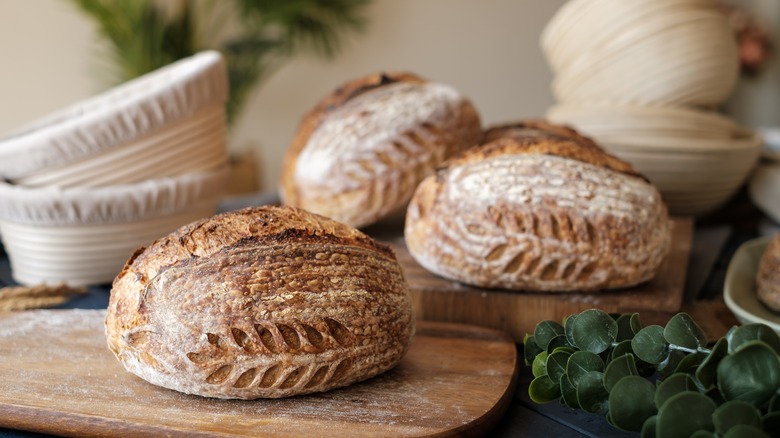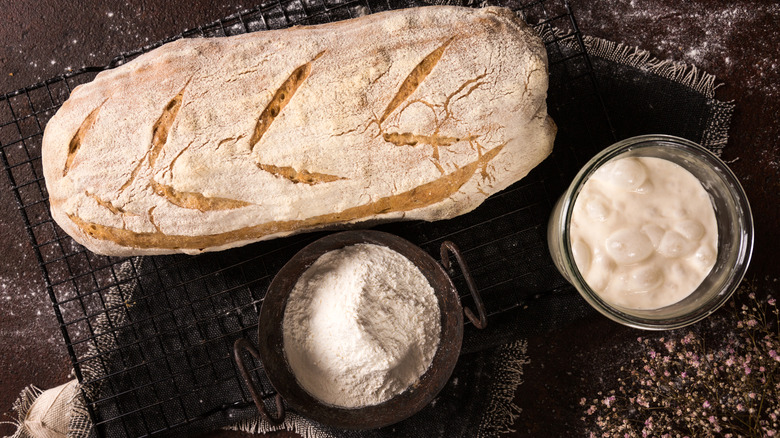The Flour Tip For A Lighter Loaf Of Sourdough
A few years ago, the sourdough bread trend exploded like an overgrown starter and we're still here, as obsessed as ever. The tart bread is simultaneously airy and crunchy, and it's not too difficult to whip up once you get the hang of it. If you're still struggling with the airy part we have a flour trick that will make your sourdough bread less dense.
Great sourdough bread has a crisp bite, with air pockets that make the loaf light and pleasant to eat. If your sourdough doesn't have this feature, soaking your flour in water before baking can help make consistently airy bread. Mixing flour and water in a bowl produces something called an autolyse, and going without it could be one of the biggest mistakes you're making with sourdough.
The process creates enzymes called protease, which makes the dough stretchier and thus simpler to knead. With the dough elastic and stretchy, it develops pockets of air easily, leading to that light texture sourdough is known for. The technique also helps to jumpstart the production of gluten, leading to more flavorful bread that's easier to work with. The dough won't have to be mixed as long thanks to the gluten.
What type of flour should you use to make autolyse?
For the best results with your autolyse, high-protein flour helps the bread with structure and rising. You can autolyse the flour for anywhere from 15 minutes to one hour; in our fresh-baked sourdough bread recipe, we left it for 30 minutes. However, this mostly works with bread flour. It may need to stay for up to two hours when working with whole wheat flour, or even 12. Whole wheat flour has bran, which slows down gluten production and takes a while to hydrate, meaning the flour will need to soak for longer.
Although high-protein flour is the best choice when making an autolyse for sourdough bread, all-purpose flour can still work if that's all you have. In this case, you'll need to decrease the flour's soak time, ensuring not to exceed 30 minutes. All-purpose flour produces softer dough than its high-protein counterparts, so you'll need to use a smaller amount of water, as well.
Whichever flour you use, you can tell your autolyse is done when the mixture looks smooth. You can also pull it to ensure it stretches easily rather than tearing and falling apart. Check the autolyse periodically to make sure it doesn't rest too long. When left for longer than its time, the dough will turn sticky and weak. If it does, don't bother with trying to revive it, just mix some more water and flour and wait for a few minutes.

